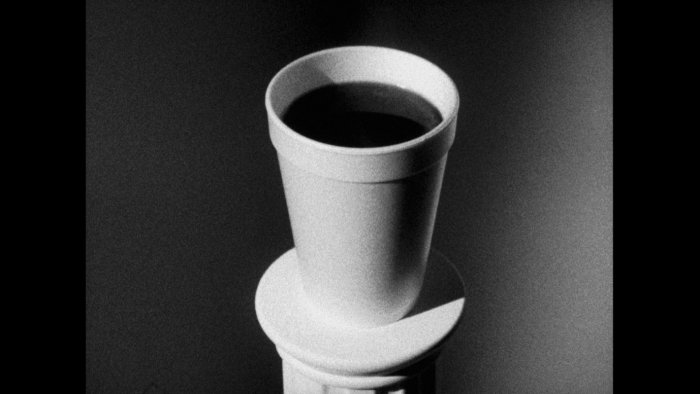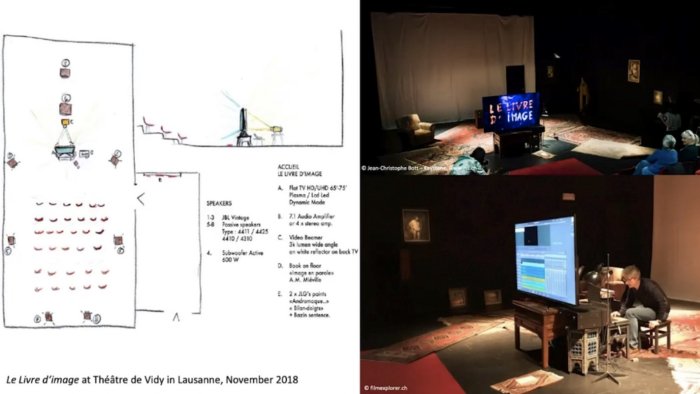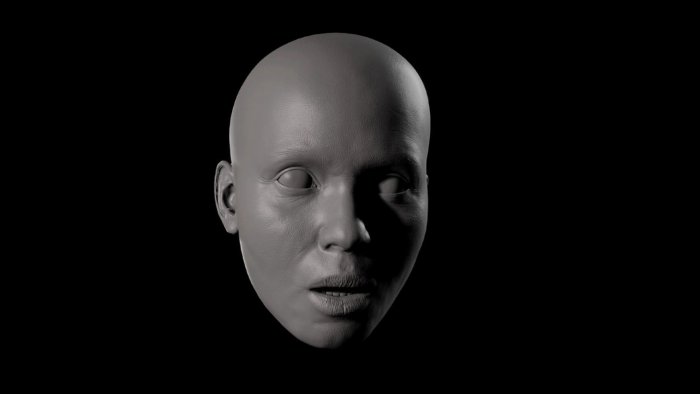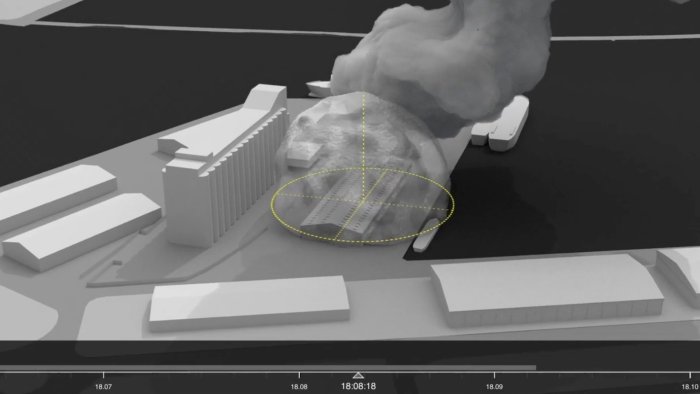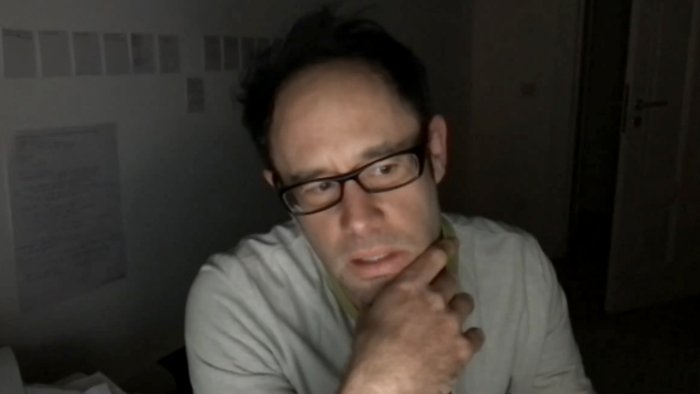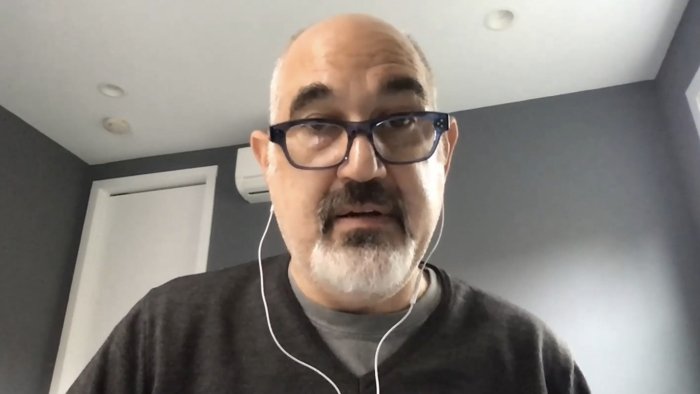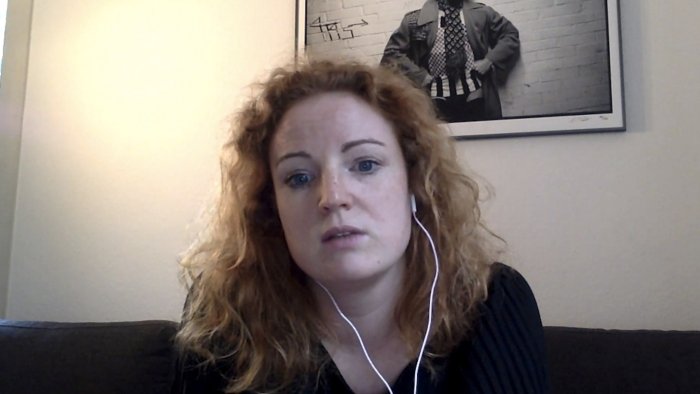Taking Measures of Taking Measures
Essay by Giuseppe Di Salvatore
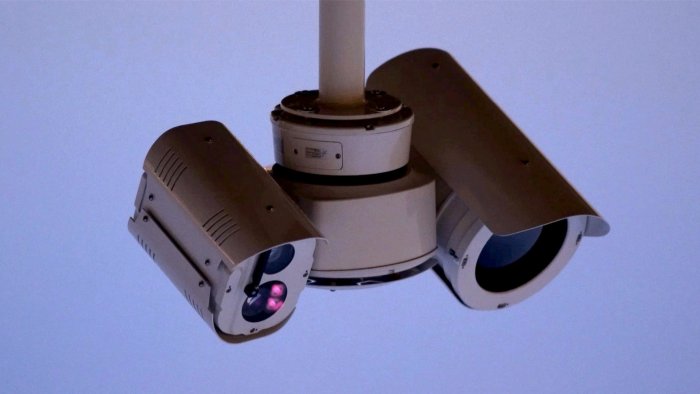
One has the right to speak about calmness without speaking calmly. I am not a partisan of the necessary coincidence of object and modality of a discourse, for it would lead to the childish and romantic idea, for example, of the necessary moral rightness of people speaking of morality, and so on. However, as the organisers of the symposium «Taking Measures» (Fabienne Liptay, Laura Walde, Carla Gabrì from the University of Zurich, in collaboration with the Migros Museum for Contemporary Art) were obliged to find a new format – pandemic oblige – compared to the traditional one of the physical university symposiums with a series of frontal presentations, they had to take the measures of the format of the symposium itself. This will push me to the interesting exercise of considering critically how they took the measures of (the format of the symposium) «Taking Measures». What is the format of a symposium on formats? This question will actually only be the focus of some concluding reflections, insofar as I believe that it is still quite interesting to speak about something without necessarily speaking by doing (this something).
In reading, hearing and seeing the contributions of the symposium (subtitle: «Usage of Formats in Film and Video Art»), one cannot but recognise a certain consensus on formats as something one should resist. The resistance against formats would get political flair as they are considered as standards that exert control, reduce freedom, oppress. From the university circles to the art world, this is a usual adagio in the humanities, today, an attitude that tries to defend anthropology against its reduction to (different forms of) anthropometry (see for example Kris Dittel quoting Lydia Ourahmane’s work on monetarization of human beings), and accuses biometry of being the evil instrument of the biopolitical agenda of technocracy.
Now, this largely shared common ground, when simplistically (often fanatically) believed, implies on one side the polarisation of an implicit moralist humanism that would claim an obscure irreducibility of the human and, on the other side, the reduction of science to purely algorithmic techniques. Such polarisation will of course sound paradoxical, especially if the “technical” question of measurement is at stake, because all modern sciences are built on the recognition of the problem of the self-embedment of the scientific observer, therefore of the inefficacity of any neutrality in scientific observation. Modern science internally dismantles any pretentions to absolute objectivity. As far as the techniques of measurement would be advanced, science will always view measurement as problematic. This means that anthropometry – biometry included – is the challenge of mature anthropology, not its enemy.
This broad reflection will work for me as a leading theme in taking the measures of Taking Measures. Thus, my task will be to find more or less explicit, more or less karstic threads in the symposium, that would challenge the consensus against formats as (reduced to) instruments of political power.
I don’t want to deny that taking measures of film, for example, has produced standard formats that made the fortune of their producers. Monopolist politics certainly reveal the reductionist and liberticide side of standards, but the problem here is the eventual imposition of some restriction on the use of formats, not the eventual success of one format over another in virtue of consensus or of its usefulness. Focussing on the restrictive consequences of formats and criticising them not only distracts us from the evaluation of their virtues in terms of communication and evolution, but also creates a specific dialectic of opposition between an indeterminate plurality of formats – or even the absence of any format – and the hegemonic formats (see Kris Dittel’s reference to Hito Steyerl’s plea for indeterminacy against the violence of observation in her Missing People). One “needs” the hegemonic formats in order to dialectically propose the indeterminate plurality as counter-pole. Anarchic and libertarian claims always need absolute positions to oppose. The resulting dialectic often amounts to vague proposals: the more the attention is focused against reductionism – for example, the reductionism of film to data and their eventual manipulation (see Volker Pantenburg’s video essay on Harun Farocki) – the less the anti-reductionist proposal will be concrete. The current concentration on calculus and algorithms, for instance, makes us forget what we would like to have instead of films reduced to a manipulable quantity of data.
With this precision, one could simply recall that criticism should remain constructive and not just comprised of negative claims. So far, so good; but when oppositional dialectic is involved, there is more than just the vagueness of the proposals to be stressed. A brilliant analysis of the specific functioning of oppositional dialectic in which criticism can be trapped is David Joselit’s contribution to the symposium. Throughout the history of the use of split screens, he exemplifies Hannah Arendt’s idea of revolution as the dialectic result of ruptures and returns – the latter concept even intended in the sense of restorations. Split screens served artistic destabilisation, in Joan Jonas and Dan Graham’s videos for example, but also served the television strategies to capture the attention of the audience – through the format of the “breaking news” for example. Even if I would say that the split screen displays a diffraction, then a synthesis, more than a real rupture, I think that Joselit’s arguments (also concerning the history of “spin” from its negative to its neutral even positive connotation, in this way rendering the manipulation of belief acceptable) convincingly demonstrate how (subversive) modernism and conservatism (of capital) can share the same format. In this respect, one cannot but think of Don Fabrizio Salina’s dialectic wisdom in Luchino Visconti’s Il Gattopardo, according to which «if we want things to stay as they are, things will have to change». The twirls or the “spins” of oppositional dialectic make the creative practice of detour just a distraction, and are thereby able to reduce criticism to entertainment. This is the typical destiny of the postmodern condition.
In the same vein of Joselit’s stressing the ambiguity of revolution between rupture and return/restoration, Omer Fast stresses another ambiguity, which is how the violence of the image is not in the image of violence but in the gap between the image (suggesting violence) and the imagined image (of violence). Responsible for the violence of images is the interplay between the presence of the image and the (even stronger) absence of it. The oppositional dialectic works at its best here. In order to understand this essential gap, one has to resist the assimilation of vision and understanding (something that was fundamental also in Farocki’s work). From this point of view, we understand where the oppression of video surveillance devices really comes from: not necessarily from the immediate exhibition of what the devices see, but from what the function of the devices lets us imagine. Through the distinction of observing and comprehending, and the analysis of the gap between the image and the imagined image, we can “see” how the oppositional dialectic builds an aesthetic of liminality, which is clearly exemplified by Fast’s preparatory works for his Munich exhibition on Max Beckmann.
Now, what is the presupposition of this specific version of oppositional dialectics within the image itself? I asked this of Omer Fast. Answer: This dialectic presupposes that there would be, somewhere, somehow, a perfect image that does not work dialectically, which is nothing but an image that is evident and non-present at the same time. This presupposition reveals a sort of iconoclastic ground, from which any dialectic can depart. I opine that this is a very important point, also because it allows us to distinguish this – I would say – “radical” iconoclastic ground from more habitual dialectic strategies of iconoclasm. Dialectic iconoclasm is “evident”, for example, in Laura Walde’s reference to Pauline Boudry and Renata Lorenz’ work Silence, where the silence is a negation signifying violence or resistance – in both cases a clearly outspoken means… A further non-radical dialectic iconoclasm, in an extremely conceptual version, we can find in Fabienne Liptay’s reflections on Philipp Fleischmann’s «void», created by his Bartlebyan «preferring not to» exhibit in other conditions than the ones he had decided for («This exhibition is to be seen in the cinema only»). Here, the artist’s proposal dialectically coincides with the negation, the not-seeing being the explicit resistance against any imposed format.
Laura Walde, in discussion with Kris Dittel, provided one of the most interesting contributions to the symposium to my eyes, in proposing to take measure as evaluation, to consider the measure of/in film in terms of the value of images. She clearly departs from the vision of value as reducible to objective judgment, thus achieving distance from the classical position of idealism and formalism in art criticism. Starting with the reference to Marcel Duchamp, and continuing with James N. Kienitz Wilkins’ «archaeological» approach in his This Action Lies and Louis Henderson’s All That Is Solid, it is the contextual analysis to prevail in the understanding of value. All the works by Alexandra Navratil, Alexandra Gelis/Carla Gabrì’s idea of social contextualisation of indexicality through the reconfiguration of formats, and Heidee Wasson’s historical analysis of the influence of the evolution of a specific medium, the portable projector, also share this interest for archaeology and context in order to seize the format as being something valuable.
Are these approaches also a symptom of a widespread renewed interest in Marxist-like analysis in terms of conditions of production? Neo-Marxist contextual determinism – evergreen in the academic and artistic circles of the United States – is largely motivated by the political commitment of criticising hidden forms of neo-Fordism against the neo-liberal vulgate of a liquid, postmodern society of services that would have made Marxist “structural” analysis obsolete (see the provocative opposition of work and value in Benera and Estefan’s work proposed by Kris Dittel I work, therefore I am).
Now, even if the conditions of production also take into account language, knowledge, the circulation of information, belief or faith, this contextualism or archaeologism appears to me to be no more than analytic criticism, which indirectly reduces value – again – to objective judgment. The challenge of taking the subjective aspect of value seriously is not really assumed. In order to assume the challenge of considering a format as a value, then one should give up analysis and understanding, and rather venture into testing the unknown potentialities of formats, taking formats as non-exhaustible horizons of practice, development, and discovery. In a word, one should stop studying and documenting, and start having an artistic relationship with formats – which artists unfortunately do less and less…
Until now, Omer Fast’s presupposition of a radical iconoclastic image (evident and absent) and Laura Walde’s (unsolved) challenge of value as irreducible to objective analysis had emerged as the only two ways to escape the consideration of formats within the functioning and the problems of oppositional dialectic. But we can also take a different path, and consider formats without the prejudice of them being restrictive or oppressing. In order to do that, two steps can work as liberating.
As already anticipated through the artistic relationship with formats, one can start taking formats as opportunities to learn their potentialities. A first step. More than analysis, the experience of formats will prevail, through which one can also become aware of the limits of formats, how they can resist. Through experience, our passive stance towards formats won’t be necessarily negative, but can be a discovery tool. A second step then will be the use of formats: through use, we get to understand and therefore control them: we emancipate from their eventual restrictive power not through opposition but through use and practical knowledge. Together with a certain passivity, or acceptance of formats, instrumentalism will also show its positive side: accepting the formats’ rules, in a certain sense uncritically, we will get to control them, to manipulate them.
This alternative path in approaching formats is the path of the makers: artists, filmmakers, technicians... In the symposium, I find two examples of this emancipatory attitude towards formats. One is Fabrice Aragno’s practice and (then) reflection on the exhibition of Jean-Luc Godard’s Le livre d’image: exhibiting here equals using and manipulating formats. The specific power of framing that formats have is assumed and expanded into an intentional staging: the restrictive power of formats is used to display a theatrical exhibition where the formats become instruments of artistic expressions. In this way, the artist does not resist the power of formats but takes it and uses it. This specific reversal of power is also exemplified by Eyal Weizman’s use of video surveillance images in order to reverse their oppressive and controlling power in order to produce and make public new evidences and a critical discourse. Thanks to his Forensic Architecture, the implicit criminalisation that Omer Fast stressed in the device of video surveillance is reversed into an explicit critical discourse that uses, in a way, the by-products of this device.
On the same path – on the side of formats – which is alternative to the oppositional dialectic approach towards formats, we can go further, passing from the possibility to reverse the eventually oppressive power of formats and turn it into their critical manipulation, to the consideration of the transformation of formats.
I will take this path coming back to the theme of anthropometry, more precisely to the question of film not (only) as measured, formatted, but as a tool to measure and format people. In continuity with the example of video surveillance devices, Fabienne Liptay and Clemens von Wedemeyer focus on computer modelling as a basis to discuss what they call the «statistical reasoning». Computer simulation for sociological tests for political control: in their discourse, this seems to be the line that binds statistical reasoning and political oppression. But I would say that the problem is not the statistical representation of people. This is obviously regressive and de-individualising. The problem is not in making sheer facts into a standard, the problem is in making standards into restrictive norms to be effectively applied – and not just considered as a regulative orientation tool for the understanding. Any understanding implies modelling through standards; the mistake would rather be to force these models and reality to coincide, a mistake that has nothing to do with understanding and statistical reasoning. Science is predictive – on probabilistic terms – not prescriptive. Prescription is the task of politics, or ethics.
More specifically, visual standardisation (through casting and typological categorization) can even be used to avoid control and oppression: the anonymous mask of the inexpressive standard human (even man and woman confounded) will challenge the need of social monitoring. This is what Omer Fast’s work on A.I. shows, the morphing of a face that is able to avoid facial recognition (Karla). The fact that the A.I. technology can have a liberating function far from oppression is perfectly coherent with the specificity of its being able to learn. A.I. technology is an example of something that goes beyond the regressive and reductionist attitude of statistical reasoning – even if it works with statistical data. A.I. formats can be creative, at least insofar as they are able to transmute themselves towards new forms that are not necessarily predictable. Thomas Julier’s Chameleon Eyes is suggestive of the adaptive capacity of learning machines, which can actually also expand beyond the limits of the objective of adapting. The question of the plasticity of formats is at stake, and how it can be more subversive than any criticism of formats considered as intrinsically limiting. Plasticity of formats and evolutive standards are the perfect alternative to oppositional dialectic approaches to formats (in this regard, Warren Neidich’s concentration on neuro-plasticity in his neuro-aesthetic could be an interesting echo, if only the scientific basis of his discourse were not so fragile and underdetermined).
What’s more: not only can formats transform themselves but we can transform them. This is mainly the output of Laura Walde’s reference to Jacques Rancière’s implicit criticism of distribution and organisation (Le partage du sensible): if politics and art decide visibility through mechanisms of recognition, then the alternative pattern would be circulation and migration between formats and boundaries. Through the reference to Stefan Kruse Jørgensen’s work on the migration of images, Walde points out the question of mobility, and of mobile identity, as transformative models for formats. From this perspective, I believe that the debate on queerness would assume a very central role in contributing to the reflection on the transformative power of formats. Correspondingly, the delicate question of translation of formats – which has not been discussed in the symposium – would have incredible impact for this reflection.
Yes, there is intellectual “metrophobia” and technophobia in the air, which seems to me to block a true understanding of the potentialities and challenges of formats. This is the reason why I’ve tried to show the specific traps of oppositional dialectic in metrophobia, and its consequent strategies of iconoclasm. The consideration of measure in terms of value can constitute a challenge to the dialectic approach and pushes us to reconsider formats, beginning with their acceptance. Using them (by knowing them) reverses the power relationship with formats, all the way up to their manipulation and transformation, no longer against, but also with, technology.
Last but not least: one should not forget a particular virtue that even uncritically accepted formats have, for without sedimented and uninterrogated formats, which accordingly obtain the status of accepted conventions, it would be impossible to realise performances. Without this variety of uncritically accepted formats, any attempt to perform will fail and remain just a meaningless doing.
What is the format of a symposium on formats? The organisers of this symposium had only digital options. They chose to create a new website, which is a format that has more and more the function of an archive, and is today probably the least connected digital interface available. For an event-like discussion between scholars and artists, would it not be a more interesting option to take place distributed on several existing platforms, taking advantage, for example, of the collaboration with the Migros Museum for Contemporary Art and the institutions and networks of the several participants to the symposium? Would contamination, or nomadic temporary housing, be more interesting design concepts?
Of course not, if one would use the website to test and propose particular formats, so that the discussion on formats will take place also through the way of discussing them. In spite of that, concerning the formats used on the website, we see a great homogeneity, as all the contributions pass through the format of 16:9 “standard” videos. The choice for the black background serves to dissimulate this homogeneity, allowing for an apparent variety of sizes of video windows. But the price to pay for this choice is the almost-impossibility of reading the texts accompanying the video (that are hopefully short), because white on black is very difficult to read for more than few seconds.
Even independently of the standard format 16:9, why should all contributions use the medium video, when many of them are fundamentally based on texts, or texts and photos? Why should a face speaking with his/her voice in a video be more interesting to follow than a written text with links, photos and videos accompanying it? Is it a question of mimicking the “normal” physical symposium? If so, it would mean missing the opportunity to take advantage of the digital possibilities. Or is it a simply symptom of the current trend that favours “live” content? If so, why should live content be more appealing? Isn’t the “live” format successful just because of its entertainment advantages? By the way, speaking, and speaking in front of the camera, requires skills that few scholars and artists properly exercise.
A last question will concern the idea of “symposium”. What does «Taking Measures» do in order to avoid the old problem of academic discussions, the displaying of a plurality of monologues without really discussing? Actually, more than one contribution has the form of a dialogue, or interview, between two participants of the symposium, but only Omer Fast’s contribution benefited from a (Zoom) interaction with the audience. I understand that it is often laborious to exchange with the audience and filter their questions, for the audience often proposes uninteresting platitudes, like I probably did here. It would have been nice though to know that at least the participants of the symposium would have the possibility to interact and discuss between them.
